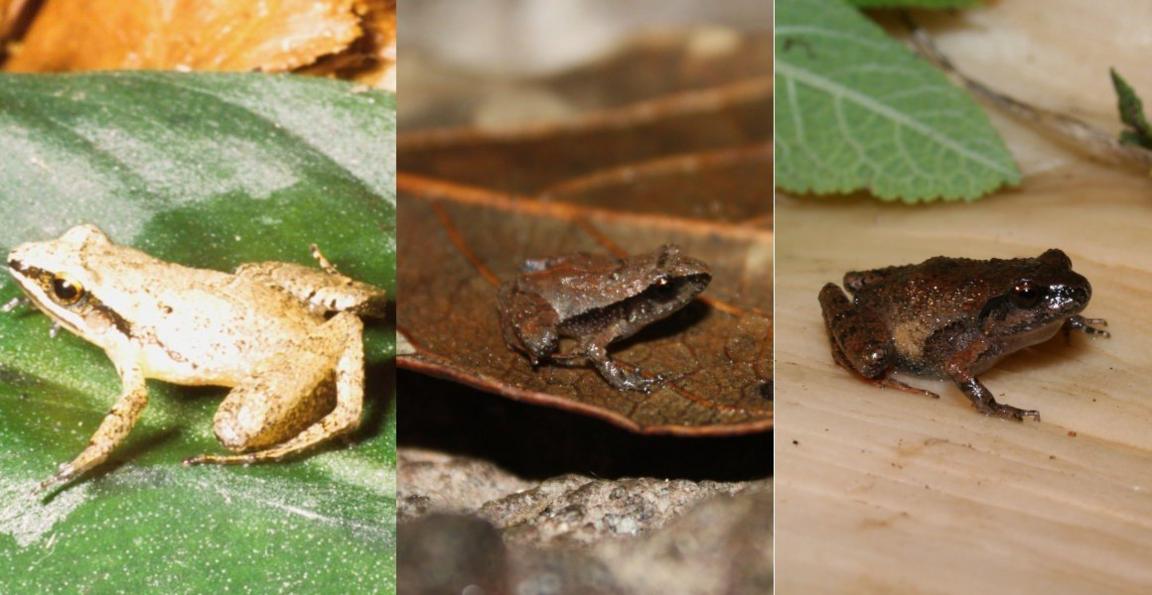Frogs: Six tiny new species discovered in Mexico
- Published
- comments

These are some of the world's smallest frogs that have ever been found!
Scientists have discovered not one - but SIX - new frog species living in the Mexican forest.
Some of the frogs are so tiny, they're smaller than the size of a one penny coin!
Experts say that the reason they've only been found now is that they've previously been confused with other frogs that are closely related to them.
They also believe that all six species should be listed as being endangered so that they can be better protected whilst more information is gathered on them.
What did scientists find?
Some of the frogs that were discovered were just over a centimetre in length!
Six new species of Craugastor frog were discovered living in a variety of habitats across Mexico, bringing the total number of this group of frogs to 12.
Some of the frogs found were only 11 to 13 millimetres long - and experts believe they could be the smallest frogs that live in the country.
Dr Jeff Streicher, from the Natural History Museum, spent over ten years looking into and identifying these frogs.
He said it felt like a "special challenge" as this group of frogs hadn't been studied very much.
Even though frogs have lungs, many actually breathe through their skin! It's very thin, and means that oxygen can get in when the frog is underwater.
This part of Mexico sees many frog species living side by side so these tiny new frog species may have been mistaken as being babies of larger frog species.
However, even though these frogs may be small, they face big threats including habitat destruction and disease which is why expert want them protected.
While these newly discovered frogs are tiny, they're not the current record holders for the smallest amphibians.
That title belongs to a frog called Paedophryne amanuensis, which was found in Papua New Guinea in 2012 and is only seven millimetres long!
- Published22 May 2020
- Published2 August 2019
- Published16 September 2013
